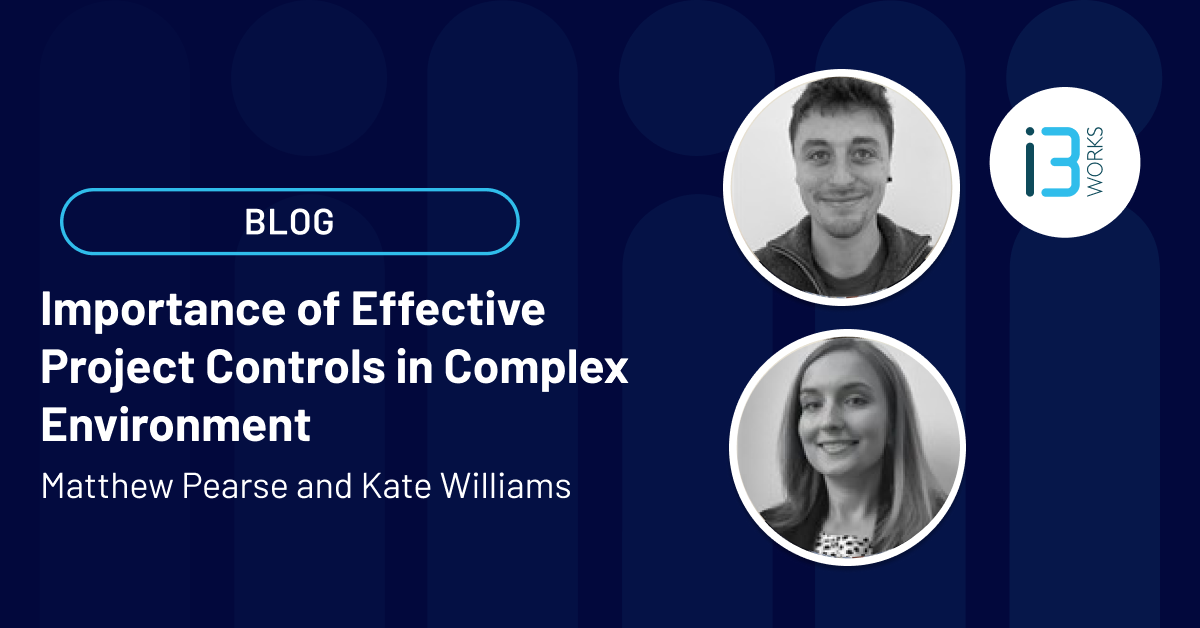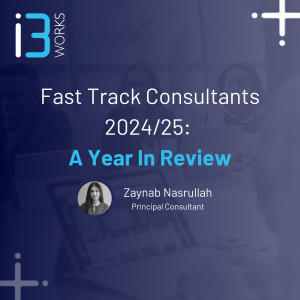All projects have the same end goal: deliver the scope, on time and within budget. Simple, right?
So why is it that, despite this universal objective, some projects and programmes succeed while others fall short?
The answer lies not just in the goal itself, but in a system that drives progress toward that goal: the system that diligently guides, effectively monitors, and efficiently adjusts delivery in real time – no matter the environment or sector.
We are, of course, talking Project Controls.
This is especially true in the public sector, where political, technical, and operational pressures make consistent execution more difficult than ever.
When we become immersed in this work, supporting diverse and demanding portfolios in government departments, we oversee the development of integrated schedules, establish regular update and reporting cycles, support risk and change management frameworks and fundamentally uphold needed control.
In principle, the role of project controls is simple: enable visibility, predictability, increase delivery confidence and informed, provide data driven decision making. But in practice, this is far from straightforward.
And what are the biggest challenges? The answer quite often is Stakeholder engagement, but to be more precise, how much buy-in delivery teams are willing to give for implementation of project control practices.
Too often, teams fall into a familiar and dangerous mindset:
“We don’t have time to write a schedule.”
“Logging risks? We’ll deal with them if they happen.”
“Assumptions were reviewed last month—skip this one.”
“Everything’s fine—just make it look good for the report.”
We’ve all heard these.
But when these shortcuts become habitual, they erode discipline and create blind spots that can derail even the most committed teams.
The consequences are clear. Planning data is patchy or poorly maintained, Risk identification is inconsistent, Dependency mapping is deprioritised or ignored, changes to scope or schedule are made informally, leading to appearance of the enigmatic “Scope by Magic” (Colloquially described as: entire work packages starting, progressing, and completing outside the project controls line of sight.)
This mindset isn’t just risky – it’s costly. Skipping controls may buy short-term speed, but it sacrifices long-term stability, predictability, delivery confidence and trust.
So how do we shift from resistance to resilience?
It starts with small, consistent improvements – be a bit better every day.
When we build a baseline schedule in Microsoft Project or Primavera P6, log risks in a RAIDO framework, or apply Earned Value Management to measure progress, we’re not just “doing admin” – we’re laying the foundation for intelligent decision-making and early issue detection.
Progress may seem slow at first. That’s the nature of compound improvements – the most meaningful results appear only after we pass a critical threshold. But if we stay the course, the results are lasting.
Strong project controls bring tangible, measurable benefits. They enable early problem detection by providing timely signals that allow teams to act before delays or cost overruns escalate – issues that rarely arise without warning. They also support improved forecasting, as reliable data is key to accurate planning, especially when projects involve multiple departments or geographically dispersed teams. Informed decision-making is another benefit, with real-time metrics and clear visibility reducing subjectivity and helping leaders allocate resources wisely while managing trade-offs transparently. Transparent and consistent reporting fosters stakeholder confidence, building trust with government decision-makers, auditors, and oversight bodies throughout the project lifecycle.
But having tools and frameworks isn’t enough. Without cultural adoption and leadership buy-in, project controls are just noise. And in high-pressure, politically sensitive environments – especially during periods of global instability – neglecting project controls implementation will lead to inefficiency, duplication, and rework.
Building a pro-project controls culture in government settings isn’t about enforcing process for its own sake. It’s about building better habits – every week, during every stand-up, in every update. Every small moment compounds and compliments, to form the muscle memory of a high-performing delivery team – and are what start the domino effect of a cultural shift.
With time, behaviours become automatic, and controls stop being a burden – they become the enabler of confident, accountable delivery. Through consistent coaching, reinforcement, and leading by example, teams begin to anticipate outcomes, spot risks early and take proactive, not reactive, action.
Project controls aren’t a blocker to delivery. They are essential. A foundation for delivering at pace without compromising coherence, and in complex, challenging environments – where nuance is rife – its criticality is magnified, not diminished.
Our role as delivery professionals isn’t just to track complex activities—it’s to steer outcomes. As nothing can ever be certain in project delivery, project controls help manage that uncertainty and assumptions, give structure, convert uncertainty into manageable risk, and empower delivery teams to meet high expectations, even in constantly shifting landscapes.
When done right, it transforms complexity into capability, helping departments meet today’s project needs while preparing to effectively deliver tomorrow’s.
If we want to deliver with confidence, accuracy, and resilience in a complex environment, start with project controls.
Build the system.
Create the habits.
And let every small improvement bring us one step closer to sustained project success.



